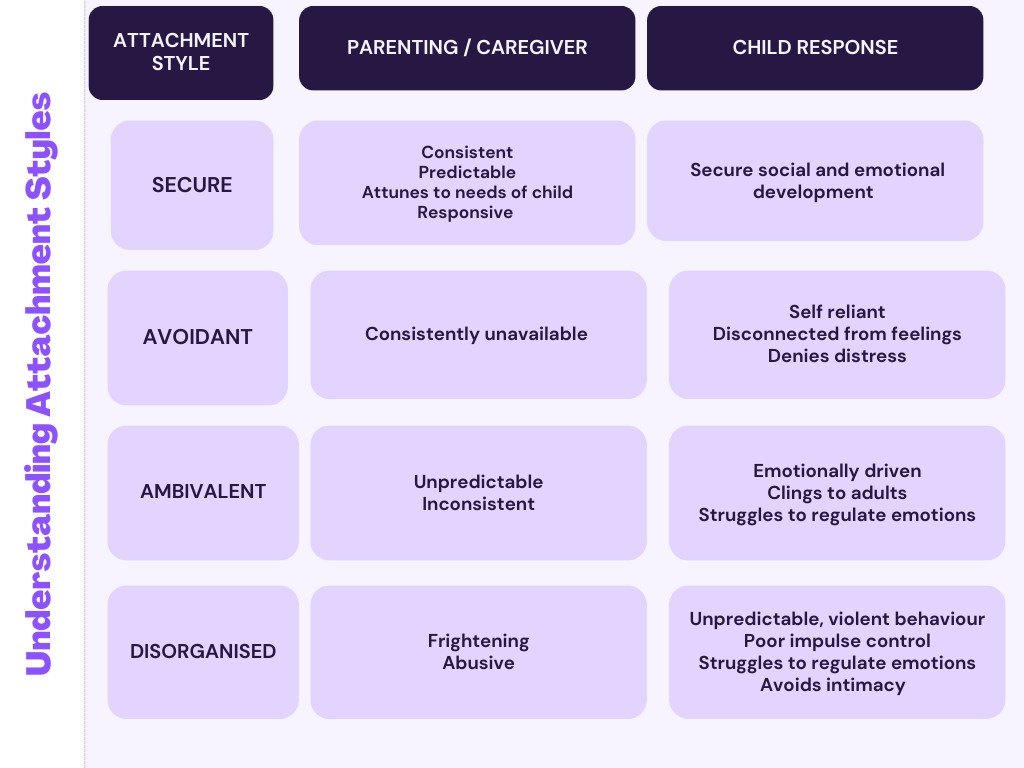Mary Ainsworth was a developmental psychologist who developed Bowlby’s research on attachment and worked to create an assessment to measure the pattern of attachment between an infant and their mother. This was known as the “Strange Situation” where a child is observed being left alone by their mother in an unfamiliar room. Ainsworth concluded three main styles of attachment from her research as she believed that the way the child behaved when separated and reunited with their mother gave important insight into their attachment style.
Watch the following video to learn more about how the ‘Strange Situation’ has been used to study attachment in infants.
These ideas were later developed into four main attachment styles which are referred to today and include:

- Secure attachment: Children may be upset when separated from their caregiver but feel assured that they will return. These children show joy when reunited and when frightened, securely attached children are comfortable seeking reassurance from caregivers. These are caregivers who have consistently met their children’s needs and are shown to be responsive. Securely attached children are typically able to build healthy relationships with others, show less aggression and be more empathetic.
- Ambivalent attachment: These are children who may present as being clingy or over-dependant. They may have experienced a lack of consistent parenting which has led to them being unsure whether they can depend on their caregiver. These children are distressed and show signs of stress when separated from their caregiver but then do not feel safe or reassured when reunited.
- Avoidant attachment: Children with an avoidant attachment tend to avoid parents or caregivers, showing no preference between a caregiver and a complete stranger. Caregivers of children with an attachment style tend to be emotionally unavailable or unresponsive in their approach to the child. They may disregard or ignore their children’s needs, and can be especially rejecting of the child. These children may appear to be disengaged or distant and not interested in focusing on building relationships.
- Disorganized attachment: These children can display some of the most chaotic and confusing behaviour. Children with a disorganised attachment do not show a clear attachment pattern so their behaviour is often unpredictable and volatile. These are children who have often experienced trauma or loss and have not have a consistent caregiver to support them through it.
The video below emphasises the long term impact that attachment can have on a child:






